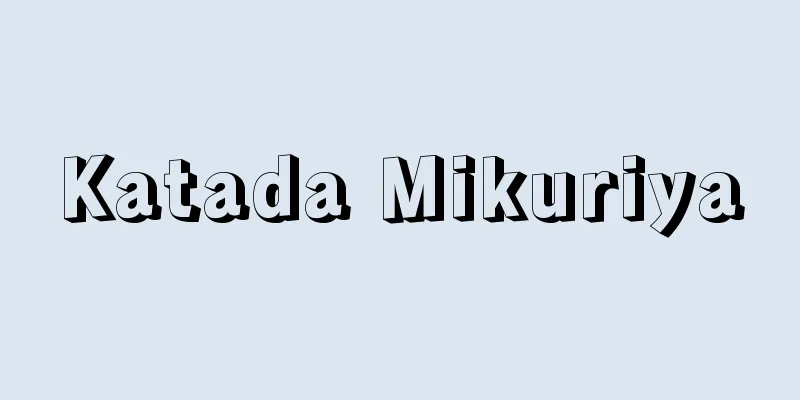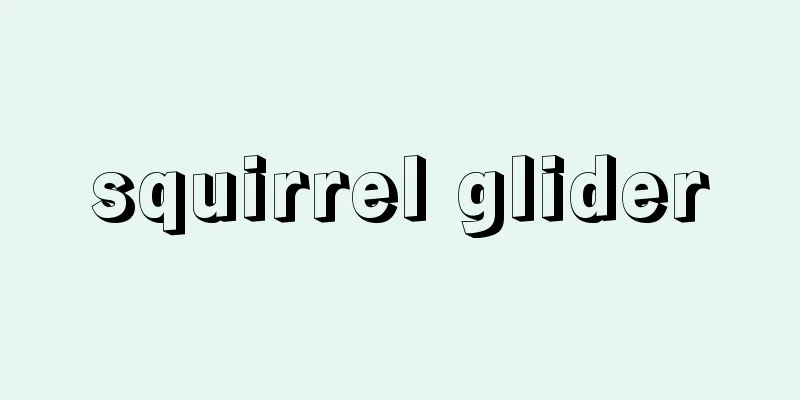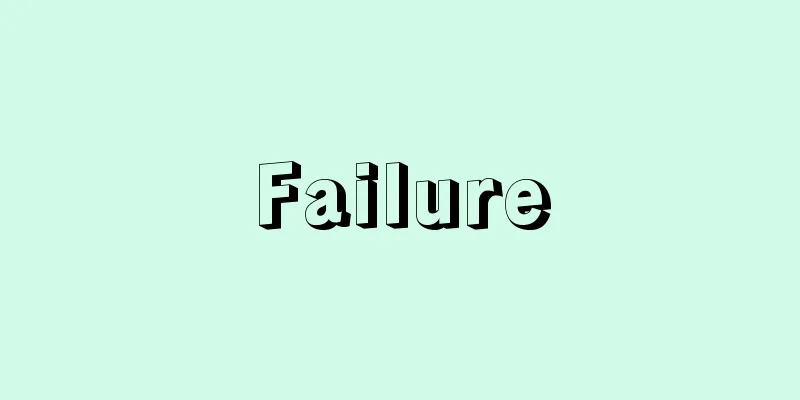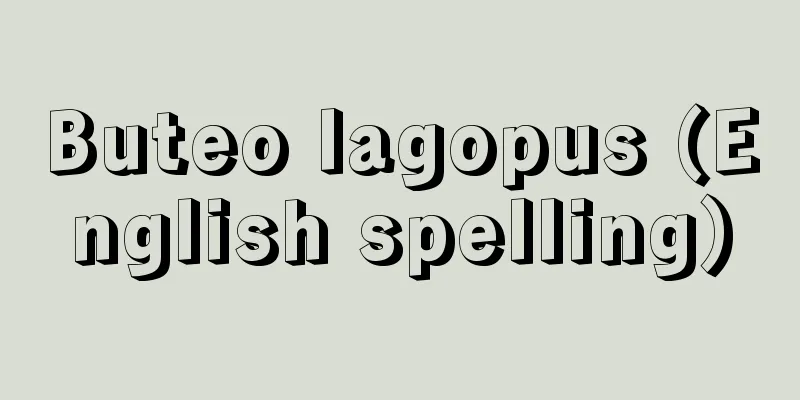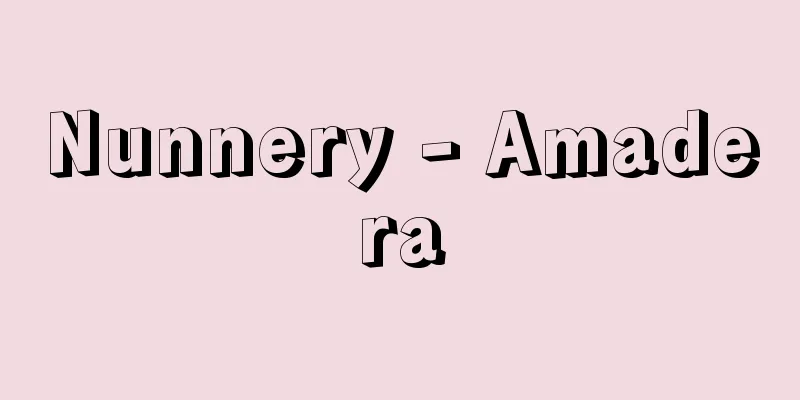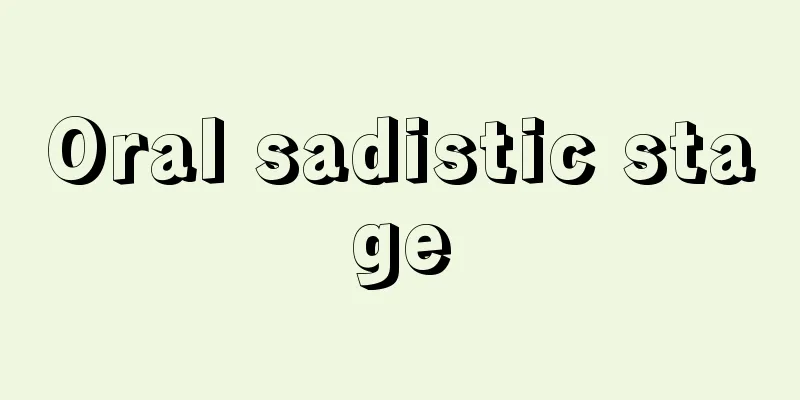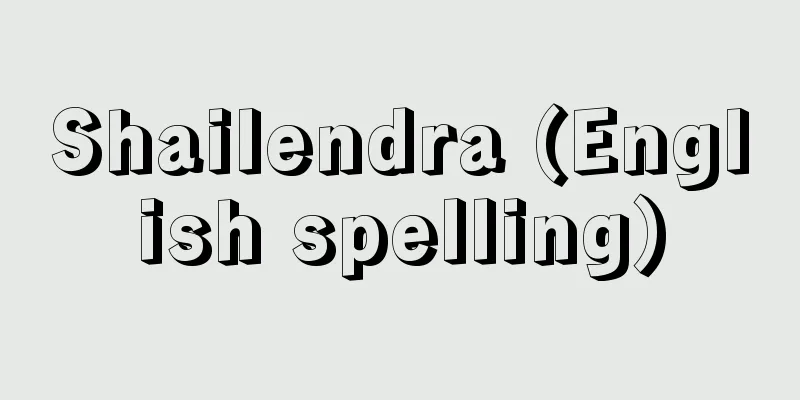Soil pollution - Dojo Osen (English)
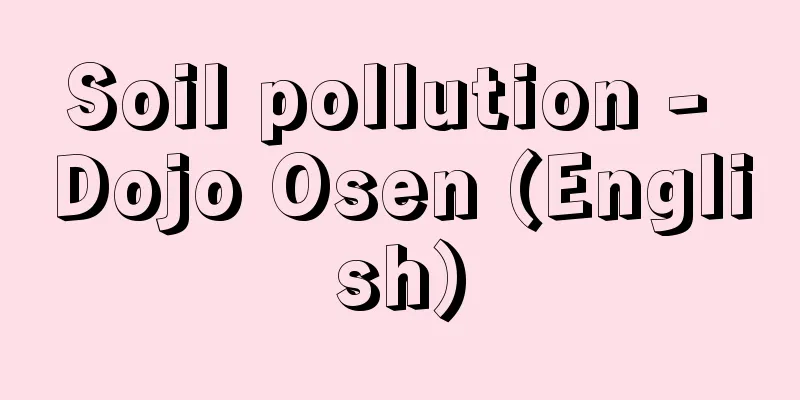
|
Contamination of soil by harmful substances. Soil is the main site of food production. However, with the rapid industrialization based on the high economic growth policy that began in the 1960s, pollution occurred, and harmful substances discharged from mines and factories accumulated in the soil. As a result, crops that are harmful to human health were produced, or damage to agricultural land occurred, causing damage to the crops themselves. Except for cases where agricultural materials are directly applied to cultivated soil and cases where industrial waste is dumped on soil, most soil contamination is caused by human activities such as air pollution and water pollution. Contaminants include heavy metals such as cadmium, copper, zinc, lead, mercury, nickel, and chromium, light metals such as vanadium and beryllium, and nonmetals such as arsenic, antimony, selenium, bromine, and iodine. In addition to these elements, there are also highly persistent pesticides, PCBs (polychlorinated biphenyls), and organic compounds such as dioxins that are generated when organic matter and chlorine compounds are burned, which have attracted great public attention due to their extremely high toxicity. Other major social issues include soil contamination by iodine-131, cesium-134, and 137 released following the accident at the Fukushima Daiichi Nuclear Power Plant during the Great East Japan Earthquake in 2011, and soil contamination by radioactive fallout such as strontium-90 and cesium-137 from atomic bomb experiments, etc. [Yuki Koyama] Soil pollution caused by mine and factory wastewater, etc.Since it was discovered in 1968 that the cause of Itai-itai disease, which broke out in the Jinzu River basin in Toyama Prefecture, was years of wastewater containing cadmium from mines upstream, soil contamination by cadmium around mines and smelters in various regions became a nationwide problem. In 1970, it was discovered that factories that use cadmium were also sources of contamination, and the problem escalated further. The frightening thing about soil contamination by heavy metals is that once soil is contaminated, it accumulates there almost permanently, making it virtually impossible to remove. As a countermeasure, the Law Concerning the Prevention of Contamination of Agricultural Land Soil (Soil Contamination Prevention Law, Law No. 139 of 1970) was enacted in 1970. The main principle of this law is that when soil contamination by specific hazardous substances exceeds a certain standard, the prefectural governor designates the area as a countermeasure area and takes necessary measures such as preventing soil contamination, removing the contamination, and converting the land to non-agricultural use. Cadmium and its compounds were designated as specific hazardous substances in 1971, followed by copper and arsenic. Other heavy metal elements are also under consideration for designation. The environmental standards for cadmium are areas where the amount of cadmium contained in rice (brown rice) exceeds 0.4 ppm or is likely to exceed 0.4 ppm, and for copper, areas where the soil contains 125 ppm or more of copper soluble in 0.1 N hydrochloric acid. For arsenic, areas where the soil contains 15 ppm or more of arsenic soluble in 1 N hydrochloric acid (10 to 20 ppm depending on the conditions of the area). Furthermore, in 1991, environmental standards were established for all soil, covering 10 items including cadmium, arsenic, and lead, and in 1994, 10 organochlorine compounds and 5 pesticides were added, bringing the total to 25 items. Under the Soil Contamination Prevention Law, agricultural land designated for countermeasures covers 6,428 hectares for cadmium, 1,225 hectares for copper, and 164 hectares for arsenic. Furthermore, among areas where countermeasures have been completed, as of the end of fiscal 2010 the areas that have been dedesignated are 5,567 hectares for cadmium, 1,169 hectares for copper, and 84 hectares for arsenic, for a total of 5,702 hectares when considering overlapping contamination. In principle, the party causing the contamination must pay for the costs, but in cases where the cause is unknown, the national government pays two-thirds and prefectures and other local governments pay the other third. The main sources of contamination in these designated areas are closed and abandoned mines, which account for 90% of the total, with factories and the like making up the remainder. Cadmium-contaminated areas include the Jinzu River in Toyama Prefecture (Toyama City) and the Usui River in Gunma Prefecture (Annaka City), and large-scale contamination is caused by smoke and wastewater from mines and smelters. In addition, there is a lot of contamination from industrial wastewater from plating factories and other places. The largest copper pollution was caused by the Ashio Copper Mine in the Watarase River Basin in Gunma Prefecture, and the affected area is said to be about 5,000 hectares. Other pollution sources include the Yoneshiro River Basin in Akita Prefecture and the Ichikawa River Basin in Hyogo Prefecture, all of which are from abandoned mines. Well-known arsenic pollution sources include the Toroku Mine in Miyazaki Prefecture, the Sasagatani Mine in Shimane Prefecture, and the Matsuo Mine in Iwate Prefecture. In addition, soil pollution by zinc has occurred in zinc mines, smelters, and plating factories. However, zinc is not very toxic, so it is not a big problem. However, care must be taken as zinc is often mixed with cadmium for contamination. Lead soil pollution overlaps with copper and zinc pollution in most cases. Examples include Tsushima in Nagasaki Prefecture and the Nihasama River Basin in Miyagi Prefecture, all of which are caused by mines. Other known contamination from automobile exhaust fumes caused by tetraethyl lead (TPE) added to gasoline, and accumulation of copper, arsenic, lead, etc. in the topsoil of orchards where large amounts of pesticides (Bordeaux mixture, lead arsenate) have been sprayed, are also known. As for mercury, slight contamination of paddy field soil by phenylmercuric acetate, which was once used exclusively to control rice blast disease, is still found today. [Yuki Koyama] Soil contamination and prevention measuresThe basic method for removing cadmium contamination is to remove contaminated soil (removal of soil) and add non-contaminated soil. However, in paddy fields where contamination is not so severe, flooding the paddy fields for the entire period and applying large amounts of lime and phosphoric acid are effective. For copper, it is effective to add soil and add soil, adjust the hydrogen ion concentration (pH) by adding lime materials, and apply organic matter such as compost. For arsenic, it is effective to keep paddy fields in a field state or with water-saving cultivation, maintain aeration by building ridges, and apply iron-containing materials. However, in reality, there is a problem of combined contamination with arsenic and cadmium, and improving the aeration of the soil causes problems such as the cadmium being easily absorbed by rice. This is the difficulty of soil contamination countermeasures. Even with the most basic method of removing soil and adding soil, there is an inevitable problem of nowhere to put the removed soil. [Yuki Koyama] Soil contamination by pesticides, etc.Large amounts of synthetic organic compounds such as insecticides, fungicides, and herbicides are sprayed on agricultural land. Some of the sprayed pesticides move into the atmosphere or hydrosphere through volatilization and leaching, but most of them enter the soil. They are then decomposed by microorganisms and chemically and physically, but the remainder remains in the soil. Thus, the soil is a place where pesticides accumulate, but it is also the place where decomposition occurs most actively. The period during which pesticides remain in the soil without being decomposed varies significantly depending on the soil environment and the type of pesticide. Among pesticides, organochlorine pesticides such as BHC and DDT remain in the soil for a long time, 3 to 4 years, and there is a high possibility that contaminated crops will be produced. Currently, the use of these organochlorine pesticides and organomercury pesticides in food and water areas is prohibited or restricted, and they are being replaced by agents that are effective in small amounts and have little residual effect. Parathion, malathion, and other pesticides have a short residual period of only one week. In general, pesticides are less likely to decompose in fields than in paddy fields. Furthermore, dioxins that are generated from waste incinerators and fall from the atmosphere eventually accumulate in the soil. The "Act on Special Measures for Dioxins" (Act No. 105 of 1999), which targets soil contamination by dioxins, came into effect in January 2001. Meanwhile, there had been no legal framework for soil contamination countermeasures in so-called urban areas such as former factory sites, but in May 2002 the "Soil Contamination Countermeasures Act" (Act No. 53 of 2002) was enacted and promulgated. Thus, Japan's soil contamination countermeasures are as follows: [Yuki Koyama] Soil contamination by radioactive materialsThe accident at the Fukushima Daiichi Nuclear Power Plant in 2011 released a large amount of radioactive material into the environment, causing widespread soil contamination never before seen. The main radionuclides released were radioactive iodine ( 131I ) and radioactive cesium ( 137Cs ). Initially after the accident, radioactive iodine was the most serious contamination, but as it has a short half-life of eight days, it has now almost completely disappeared, and the problem is now radioactive cesium ( 137Cs ), which has a long half-life of 30 years. Radioactive materials such as 137Cs are absorbed into crops by deposition from the atmosphere onto the leaves and stems, and by absorption from the soil by the crop roots. In the early stages of environmental contamination by radioactive materials, the route of deposition is the issue, but now that time has passed, the route of migration from the soil is the issue. The degree of contamination of crops grown in soil due to radioactive materials is closely related to the concentration of radioactive materials in the soil and the migration coefficient to crops. The Ministry of Agriculture, Forestry and Fisheries set the migration coefficient of radioactive cesium ( 137Cs ) at 0.1 on the safe side in order not to exceed the provisional value for food (at the time) of 500 becquerels per kilogram, and set the upper limit of the radioactive material concentration in rice paddy soil where rice is grown at 5,000 becquerels per kilogram. Since April 2012, the standard limit for radioactive cesium in general food has been set at 100 becquerels per kilogram, but for the 2012 rice crop, measures are being taken in response to the detection of radioactive cesium in rice grown the previous year. Radioactive cesium in soil is strongly bound to clay minerals and exists in a form that is difficult to move in the surface layers of the soil, so the transfer coefficient varies depending on the type of soil: it is high in sandy and organic soil and low in clay soil. Effective measures to reduce radioactive contamination of agricultural crops include the application of soil conditioners such as zeolite and vermiculite, which adsorb and fix radioactive cesium, and the application of potassium fertilizer, which takes advantage of the antagonistic effect between cesium and potassium. Additionally, methods of decontamination that are being considered to remove radioactive materials from soil include stripping off the topsoil, removing it with water, burying it by inversion cultivation, and decontamination using highly absorbing plants. [Yuki Koyama] "Soil Contamination Countermeasures Act" by Ozawa Hideaki (2003, Hakuyosha)" ▽ "Soil Contamination and its Comprehensive Countermeasures - Investigation Techniques, Laws, Appraisal, Land Use" edited by the Association for Asset Valuation Policy Studies and TALO Urban Planning, supervised by the Urban Research Center of the Private Urban Development Promotion Organization (2003, Gyosei)" ▽ "Soil Contamination Purification Technology and Market" (2003, CMC Publishing) ▽ "Soil Environment Law Study Group, Q&A Commentary on the Soil Contamination Countermeasures Act with Three-Step Comparison Table (Laws, Ordinances, Regulations)" (2003, Tokyo Horei Publishing)" ▽ "Learn Soil Contamination and Purification Technology from the Basics - Investigations and Countermeasures Based on the Soil Contamination Countermeasures Act" by Yoshimura Takashi (2003, Industrial Research Association)" ▽ "Geo-Environment Technology Study Group, Soil Contamination Countermeasures Technology - Soil Contamination Countermeasures Act and Practical to Latest Technology Written by a Practitioner" (2003, JUSE Press)" ▽ "Environmental Management Research Group, ed., "Easy-to-understand Soil Contamination Countermeasures Act: Background of the Soil Contamination Countermeasures Act and Overseas Examples" (2003, Doyukan) " "Soil Environmental Law Research Group, ed., "Article-by-Article Commentary on the Soil Contamination Countermeasures Act" (2003, Shinnihonhoki Publishing)" "Tsukada Yoshifumi et al., "Soil: Behavior of Radionuclides in Crop Systems" (Japanese Journal of Soil and Plant Nutrition, Vol. 82, No. 5, 2011, Japanese Society of Soil and Plant Nutrition)" [Reference items] | | | | | |©Shogakukan "> Characteristics of major soil polluting inorganic elements Source: Shogakukan Encyclopedia Nipponica About Encyclopedia Nipponica Information | Legend |
|
有害物質によって土壌が汚染されること。土壌は食糧生産の主要な場である。しかし1960年代に始まった高度経済成長政策に基づく急速な工業化の進展に伴って公害が発生し、鉱山や工場などから排出された有害物質が土壌中に蓄積し、その結果、人間の健康を損なうおそれがあるような農作物が生産されたり、または農作物自体が障害を受けたりする農用地の被害が発生した。 土壌汚染は、農耕地土壌に直接農業資材を施用する場合と、産業廃棄物を土壌に投棄する場合を除けば、その大部分が大気汚染、水質汚濁などを介して人為的に発生するものである。汚染の原因物質としては、カドミウム、銅、亜鉛、鉛、水銀、ニッケル、クロムなどの重金属類や、バナジウム、ベリリウムなどの軽金属、ヒ素、アンチモン、セレン、臭素、ヨウ素などの非金属がある。また、これらの元素のほかにも、残留性の高い農薬、PCBや(ポリ塩化ビフェニル)、そのきわめて強い毒性から社会の高い関心を集めている、有機物と塩素化合物が燃焼する際に生成するダイオキシン類などの有機化合物がある。そのほか2011年(平成23)の東日本大震災の際に発生した福島第一原子力発電所の事故に伴い放出されたヨウ素131、セシウム134、および137による汚染や、原爆実験などによるストロンチウム90、セシウム137などの放射性降下物による土壌汚染があり、大きな社会問題となっている。 [小山雄生] 鉱山・工場排水等による土壌汚染富山県神通(じんづう)川流域で発生したイタイイタイ病の原因が、上流にある鉱山からの長年にわたるカドミウムを含む排水に起因することが1968年(昭和43)に判明して以来、各地の鉱山や製錬所周辺のカドミウムによる土壌汚染が全国的に問題となった。さらに1970年にはカドミウム使用工場も汚染源となることがわかり、問題はさらに拡大された。重金属による土壌汚染の恐ろしいのは、一度土壌が汚染されると半永久的に土壌中に蓄積され、その除去が事実上困難なことである。 この対策措置として1970年「農用地の土壌の汚染防止等に関する法律」(土壌汚染防止法、昭和45年法律第139号)が制定された。この法律は、特定有害物質による土壌の汚染が一定の規準を超えたとき、都道府県知事がその地域を対策地域に指定し、土壌汚染の防止、除去、農用地以外への転用など必要な対策を講ずることを骨子としたものである。同法における特定有害物質としては、カドミウムとその化合物が1971年に指定され、ついで銅、ヒ素が指定された。そのほかの重金属元素についても指定を検討中である。環境基準は、カドミウムでは米(玄米)に含まれる量が0.4ppmを超えると認められる地域またはそのおそれのある地域であり、銅では0.1規定塩酸に可溶な銅を土壌中に125ppm以上含む地域である。ヒ素では1規定塩酸に溶けるヒ素を15ppm(地域の条件によっては10~20ppm)以上土壌中に含む地域となっている。さらに1991年(平成3)にはすべての土壌についての環境基準が設定され、その対象はカドミウム、ヒ素、鉛など10項目について、1994年には10項目の有機塩素系化合物、5項目の農薬が追加されて計25項目となった。 土壌汚染防止法に基づく農用地の対策指定地域は、カドミウムが6428ヘクタール、銅が1225ヘクタール、ヒ素が164ヘクタールである。また、対策事業等が完了した地域のうち指定解除地域は2010年度末でカドミウムが5567ヘクタール、銅が1169ヘクタール、ヒ素が84ヘクタールで重複汚染を考慮したうえでの合計は5702ヘクタールである。事業費は原因者負担が原則であるが、原因が不明の場合は国が3分の2、県などの地方自治体が3分の1を負担して行われる。これら指定地域のおもな汚染源は、休廃止鉱山が全体の9割を占め、残りが工場などである。 カドミウムの汚染地としては富山県神通川(富山市)、群馬県碓氷(うすい)川(安中(あんなか)市)などがあり、大規模な汚染は鉱山や製錬所の排煙、排水による。このほか、めっき工場など工業廃水による汚染も多い。 銅による汚染では群馬県渡良瀬(わたらせ)川流域の足尾銅山によるものがもっとも大規模であり、その被害面積は約5000ヘクタールといわれる。そのほか秋田県米代(よねしろ)川流域、兵庫県市川流域などいずれも休廃止鉱山による汚染である。ヒ素では宮崎県土呂久(とろく)鉱山、島根県笹ヶ谷(ささがたに)鉱山、岩手県松尾鉱山などの休廃止鉱山による汚染がよく知られている。このほか、亜鉛による土壌汚染が亜鉛鉱山、製錬所、めっき工場などで発生している。しかし亜鉛は毒性が弱いのであまり大きな問題とはなっていない。ただしカドミウムと複合汚染している場合が多いので注意しなければならない。鉛の土壌汚染は大部分が銅および亜鉛の汚染と重なっておきている。長崎県対馬(つしま)、宮城県二迫(にのはさま)川流域などがその例であり、いずれも鉱山に原因する。 このほか、ガソリンに添加された四エチル鉛(テトラエチル鉛)による自動車の排気ガスからの汚染、多量の農薬(ボルドー液、ヒ酸鉛)が散布されてきた果樹園の表土では銅、ヒ素、鉛などの蓄積が知られている。また、水銀では、かつていもち病の防除にもっぱら使用されてきたフェニル酢酸水銀による水田土壌中の汚染が現在もわずかに認められる。 [小山雄生] 土壌汚染と防止対策カドミウムの汚染除去には、汚染土壌を除去(排土)し非汚染土壌を客土する排土客土が基本である。しかし汚染がそれほど強くない水田では、全期間湛水(たんすい)(水を張ること)や石灰、リン酸の多量施用が有効である。銅では、排土客土、石灰資材投入による水素イオン濃度(pH)の調整、堆厩肥(たいきゅうひ)などの有機物の施用が有効である。ヒ素では、水田を畑状態もしくは節水栽培、あぜ立てなどで通気性を保つことと、含鉄資材の施用が効果がある。しかし実際にはヒ素とカドミウムの複合汚染が発生しており、土壌の通気性をよくするとカドミウムが稲に吸収されやすくなるなどの問題を生ずる。ここに土壌汚染対策のむずかしさがある。またもっとも基本的な排土客土にしても、排土のもって行き場所がないという宿命的な問題がみられる。 [小山雄生] 農薬などによる土壌汚染殺虫剤、殺菌剤ならびに除草剤などの有機合成化合物が農耕地に多量に散布されている。散布された農薬は揮散、溶脱などによって一部は気圏や水圏に移行するが、多くは土壌中に入る。そして微生物による分解や化学的、物理的な分解を受けるが、残りは土壌中に残留することになる。このように土壌は農薬の蓄積の場であるが、またその分解がもっとも活発に行われている場でもある。土壌中に農薬が分解されずに残留する期間は、土壌の環境と農薬の種類で著しく違う。農薬のなかでもBHC、DDTなどの有機塩素剤は3~4年と長く土壌中に残留し、汚染された農作物が生産される可能性が高い。現在ではこれらの有機塩素系農薬と有機水銀は、食品および水域での使用が禁止または制限され、少量で効果があり残留性が少ない薬剤に切り替えられてきている。またパラチオン、マラソンなどの残留期間は1週間と短い。一般に水田よりも畑のほうが農薬が分解されにくい。 また、ゴミ焼却炉などから発生し、大気中から降ってくるダイオキシン類は最終的に土壌に積もる。このダイオキシン類による土壌汚染を対象にした「ダイオキシン類対策特別措置法」(平成11年法律第105号)が2001年(平成13)1月に施行された。一方、工場跡地などのいわゆる市街地における土壌汚染対策については、これまでは法的な枠組みがなかったが、2002年5月「土壌汚染対策法」(平成14年法律第53号)が成立、公布された。このように日本の土壌汚染対策としては、 [小山雄生] 放射性物質による土壌汚染2011年(平成23)に起きた福島第一原発の事故により環境中に大量の放射性物質が放出され、これまでにない広範囲の土壌汚染が生じた。放出されたおもな放射性核種は放射性ヨウ素(131I)と放射性セシウム(137Cs)である。事故発生の当初は放射性ヨウ素による汚染がもっとも深刻であったが、半減期が8日と短いので現在はほとんど消滅し、半減期が30年と長い放射性セシウム(137Cs)が問題となっている。 137Cs等の放射性物質が農作物へとり込まれるのは、大気から葉茎への沈着と、作物根による土壌からの吸収によっている。放射性物質による環境汚染が発生した初期では、沈着経路が問題であるが、時間が経過した現在では土壌からの移行経路が問題となる。土壌中の放射性物質により、そこで栽培された農作物の汚染の程度は土壌中の放射性物質の濃度と作物への移行係数に大きくかかわっている。農水省は2011年度産の稲の作付の方針を、食品の暫定値である1キログラム当り500ベクレル(当時)を超えないよう、放射性セシウム(137Cs)の移行係数を安全側の0.1とし、稲を作付する水田土壌の放射性物質濃度の上限値を1キログラム当り5000ベクレルとした。2012年4月より放射性セシウムの一般食品中の基準値は1キログラム当り100ベクレルとなったが、2012年度産の稲の作付については、前年度産米からの放射性セシウム検出状況に応じた対策をとっている。 土壌中の放射性セシウムは、粘土鉱物と強く結び付いて土壌の表層に動きにくい形で存在しているので、移行係数は土壌の種類によって違ってくる。砂質、有機質土壌で高く、粘土質土壌で低い。 農作物の放射能汚染を軽減する方策としては放射性セシウムを吸着・固定させるゼオライト、バーミュクライトなどの土壌改良材の施用や、セシウムとカリウムとの拮抗作用を利用したカリ肥料の施用が効果的である。また、土壌中の放射性物質を取り除く除染方法として表土のはぎ取り、水による除去、反転耕による埋め込み、高吸収植物による除染等の方策が考えられている。 [小山雄生] 『小沢英明著『土壌汚染対策法』(2003・白揚社)』▽『民間都市開発推進機構都市研究センター監修、資産評価政策学会・TALO都市企画編『土壌汚染、その総合的対策――調査技術、法律、鑑定、土地利用』(2003・ぎょうせい)』▽『『土壌汚染浄化技術と市場』(2003・シーエムシー出版)』▽『土壌環境法令研究会編『Q&A解説土壌汚染対策法 三段対照表付(法・令・規則)』(2003・東京法令出版)』▽『吉村隆著『初歩から学ぶ土壌汚染と浄化技術――土壌汚染対策法に基づく調査と対策』(2003・工業調査会)』▽『地盤環境技術研究会編『土壌汚染対策技術――実務者が書いた土壌汚染対策法と実用技術から最新技術まで』(2003・日科技連出版社)』▽『環境マネジメント研究会編『「土壌汚染対策法」早わかり――土壌汚染対策法の背景と海外事例』(2003・同友館)』▽『土壌環境法令研究会編『逐条解説土壌汚染対策法』(2003・新日本法規出版)』▽『塚田祥文他「土壌――作物系における放射性核種の挙動」(『日本土壌肥料学雑誌』第82巻5号・2011・日本土壌肥料学会)』 [参照項目] | | | | | |©Shogakukan"> おもな土壌汚染性無機元素の特性 出典 小学館 日本大百科全書(ニッポニカ)日本大百科全書(ニッポニカ)について 情報 | 凡例 |
<<: Soil improvement - Dojo Kairyo
>>: Soil - Dojo (English spelling) soil
Recommend
Australopithecus africanus
Please see the "Australopithecines" pag...
Siberian weasel
...A mammal of the Mustelidae family in the carni...
Alaska pollack (Alaska pollack)
Also called Alaska pollock (Palaeocod), mentai (a ...
Scutellum
...The evolutionary trend is known to be microtau...
Pigeonite (English spelling)
A type of clinopyroxene that is poor in calcium. I...
Childcare leave - childcare leave
This is leave for childcare, and eligible workers...
Traveling Mountain People - Traveling Mountain People
…His first name was Yan. His pen name was Ganbo, ...
Struggle against the Sanko Rengo enterprise consolidation - Sanko Rengo enterprise consolidation anti-struggle
In 1953, during a mining recession, a labor strike...
Jokhang Temple - Jo Bo Khang (English spelling)
The name of a Tibetan temple. It is also written a...
Dellinger effect
A phenomenon in which international shortwave rad...
Aelianus
…Originally from Celtic, it means “fighter” or “c...
Bifidobacterium bifidum; bifidobacteria
A type of intestinal bacteria, it is an anaerobic ...
Ruditapes variegata (English spelling) Ruditapes variegata
…[Hiroshi Fukuda]. … *Some of the terminology tha...
Silverfish (Meichidai) - Silverfish
…Its body shape is similar to that of sea bream, ...
Kawasaki City Urban Charter Ordinance - Kawasaki City Urban Charter Ordinance
…After the war, Japanese cities enacted declarati...
